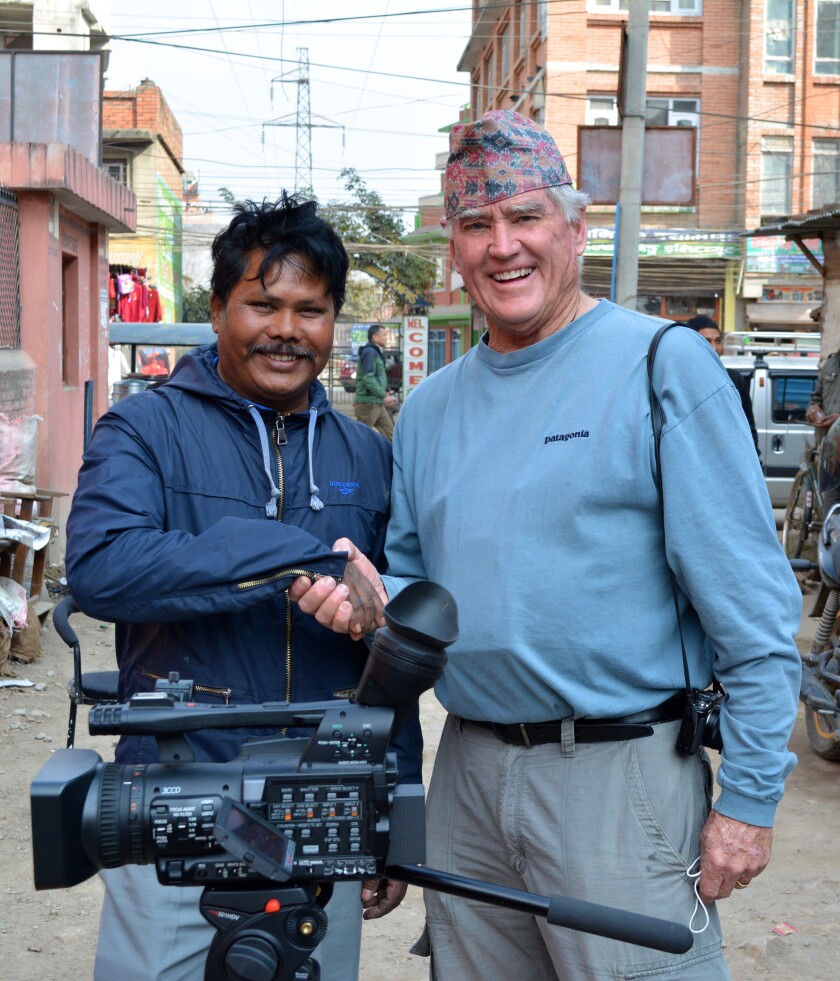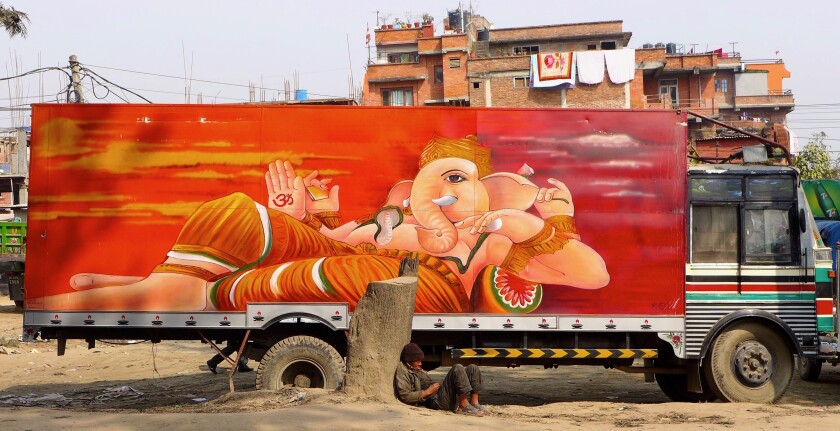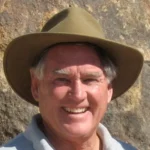RPCV Film maker Ron Ranson’s ‘Tattooed Trucks of Nepal – Horn Please’

UC San Diego’s Ron Ranson documents Nepal’s arty trucks in the award-winning documentary ‘Tattooed Trucks of Nepal – Horn Please’
Before he fell in love with the elaborately decorated, philosophically minded freight trucks of Nepal, filmmaker and UC San Diego lecturer emeritus Ron Ranson fell in love with the delightful, resilient and inspirational people of Nepal.
It was the spring of 1964, and Ranson was beginning his two-year stint as a Peace Corps volunteer in the Nepalese town of Narayangarh. He was the first Peace Corps volunteer the locals had ever seen, and they were like no one he had ever met.
It was delight at first sight.
“The generosity of the people was quite evident from the moment I got there. They were so open to having somebody like me come into their community,” the 80-year-old Ranson said from his home in Leucadia.
“And there was also their resiliency and their ability to make things work no matter what it is. That really stuck with me.”
Almost 60 years later, Ranson is celebrating the unforgettable Nepali people with a documentary dedicated to their equally memorable trucks.
In “Tattooed Trucks of Nepal – Horn Please,” Ranson pays tribute to the quirky tradition that finds Nepali truckers going to great, creative lengths to turn their vehicles into rolling pieces of uplifting art.
From the elaborate, professionally airbrushed paintings of the Hindu god Ganesh that cover entire sides of these large freight trucks, to the catchy “truck literature” poems that make for diverting mud-flap reading, Ranson’s 40-minute film is a colorful, affectionate look at an endearing local custom.
The film also speaks uplifting volumes about the resilient, creative people who make this vehicular magic happen.
“There are so many things that are whimsical and show the spirit that Nepalis have. It is just a spirited and fun culture,” said Ranson, who was a lecturer in UC San Diego’s Theatre and Dance department from 1979 until 2003.
“These trucks are big and smelly, and they raise a lot of dust, so they are really looked down on. But out of all that comes this art and these very thoughtful sayings that are sometimes quite poetic, and it is all coming out through these rough-and-tumble truck drivers.”

“Tattooed Trucks of Nepal.” (Ron Ranson)
In “Tattooed Trucks of Nepal,” Ranson takes us on an artistic road trip that swings through the history of Nepal’s hard-working trucks, trends in truck-art iconography, and an explanation behind the popularity of truck-art honoring Bob Marley and soccer-star David Beckham.
We also meet a young trucker named Aitaman Gurung, who turned to trucking after his home was destroyed in the devastating 2015 earthquake that killed more than 8,900 people in Nepal. Now, all he has is his beautifully decorated truck, which is blessed by a Buddhist monk before Gurung hits the road, vowing to work hard for his family, “in good times and bad.”
That same earthquake also played a role in “Tattooed Trucks of Nepal.”
In 2016, Ranson became intrigued by an article he read about Nepal’s “Lorry Laureate” Narayan Bhakta Karna, who was bringing uplifting verse to Nepal’s bumpers and mud-flaps. Ranson thought it might make a good follow-up to 2012’s “The Prayer Flags of Nepal,” a visual-meditation film he made with his son Tim.
So Ranson ran the idea by Nepali filmmakers Sudarson Karki and Dhawa Gyanjen Tsumba, who Ranson worked with on “The Prayer Flags of Nepal.” Because the earthquake had also decimated the Nepali film business, Karki and Tsumba were out of work and ready to be employed. And inspired.
Ranson and his “Tattooed Trucks” team — which also included Emmy Award-winning cinematographer Ken Kebow; editors Holden Sisco and J.J. Measer (who were Carlsbad High School students when they started working on the film); and Ranson’s wife, Nicola, who is the film’s co-writer and producer — worked on the film from January of 2017 through August of 2021.
It was a long journey, but when “Tattooed Trucks of Nepal” hit the film-festival circuit, the artistic rewards started rolling in.
In 2021, the film won Best Documentary honors at multiple festivals, including the Cannes World Film Festival and the New Wave Film Festival in London. It has also won numerous awards for its editing, cinematography, music and for Ranson’s voice-over narration.
The film can be streamed for free on its official website, tattooedtrucksofnepal.com. Donations are welcome, but Ranson hopes that you leave feeling rich with appreciation for the people who made this whole project possible.
“The people of Nepal have very little. Even the truckers,” Ranson said. “But one of them told me, ‘I want to present these images of Buddha on my truck and go off to the far east and west of Nepal and have people enjoy this art.’
“Some of these truckers spend thousands of dollars to bring this art to the people. And that is profound.”

wonderful film that focuses our attention in a new way—in my 4 years in India I , of course, saw hundreds of trucks (and other vehicles) extensively decorated and only vaguely noted them, never exploring why and how the tradition of decorating one’s vehicles so extensively came into being. Thanks Ron for bringing all this to light.